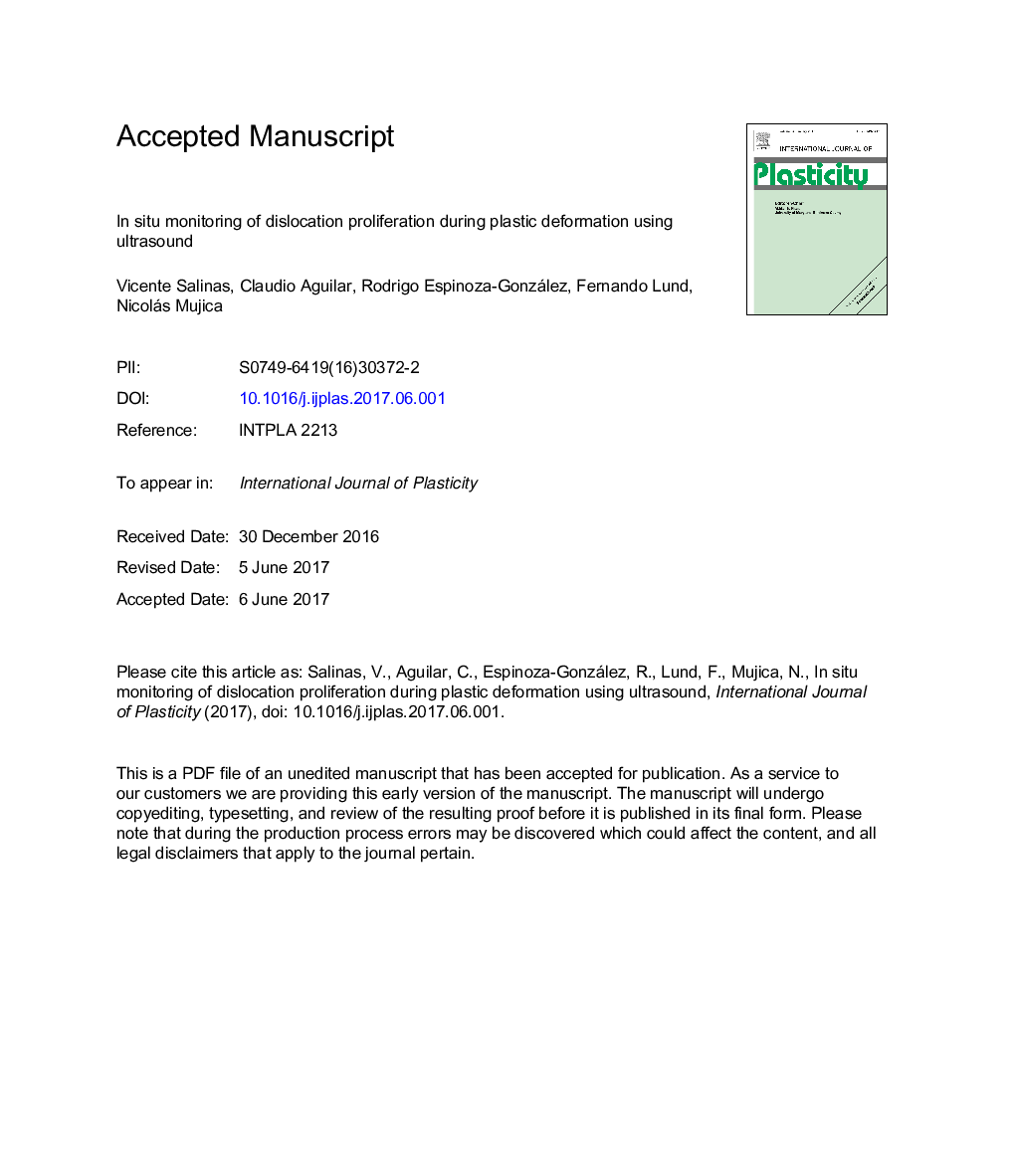| Article ID | Journal | Published Year | Pages | File Type |
|---|---|---|---|---|
| 5016738 | International Journal of Plasticity | 2017 | 31 Pages |
Abstract
Ultrasound has long been used as a non-destructive tool to test for the brittle fracture of materials. Could it be used as a similar tool to test for ductile failure? As a first step towards answering this question, we report results of local measurements of the speed of transverse waves in aluminum under standard testing conditions at two different probe locations and continuously as a function of applied load. The result, as expected, is independent of stress in the elastic regime, but there is a clear change, consistent with a proliferation of dislocations, as soon as the yield strength is reached. We use a model that blames the change in wave speed on the interaction of elastic waves with oscillating dislocation segments, which quantitatively relates the change in wave velocity with dislocation density Î and segment length L, thus obtaining a continuous relation between dislocation density and externally applied stress. We took off samples from the probe before, at intermediate, and high loading, and we measured their dislocation density using standard X-ray diffraction and transmission electron microscopy techniques. The results agree well with the acoustic measurements, and the relation between stress and dislocation density is consistent with the Taylor rule. This indicates that monitoring the speed of transverse waves could become a useful diagnostic of dislocation density for metallic pieces in service as well as a tool to test models of plastic behavior.
Related Topics
Physical Sciences and Engineering
Engineering
Mechanical Engineering
Authors
Vicente Salinas, Claudio Aguilar, Rodrigo Espinoza-González, Fernando Lund, Nicolás Mujica,
